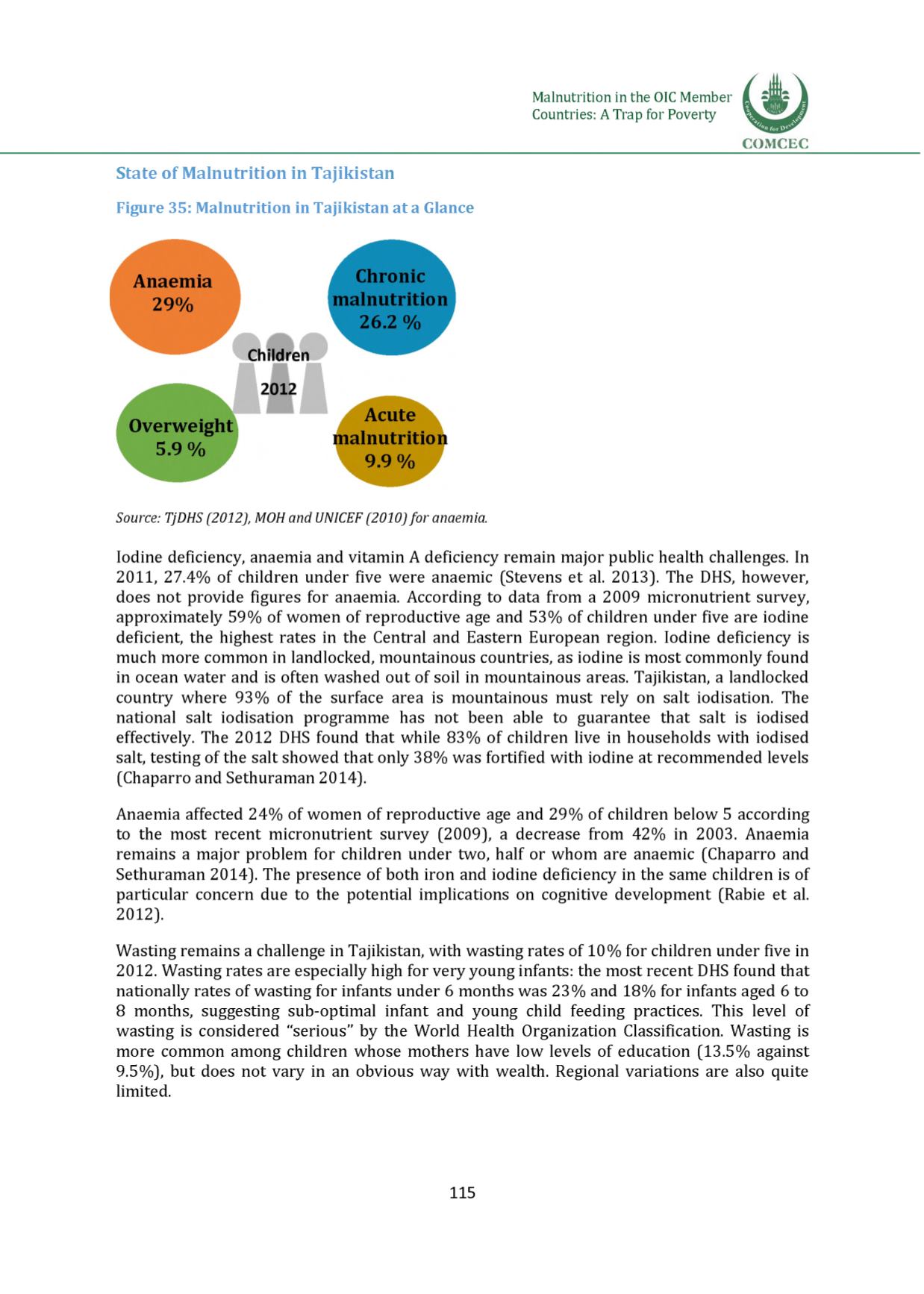

Malnutrition in the OIC Member
Countries: A Trap for Poverty
State of Malnutrition in Tajikistan
Figure 35: Malnutrition in Tajikistan at a Glance
COMCEC
Source: TjDHS (2012), MOHand UNICEF (2010) for anaemia.
Iodine deficiency, anaemia and vitamin A deficiency remain major public health challenges. In
2011, 27.4% of children under five were anaemic (Stevens et al. 2013]. The DHS, however,
does not provide figures for anaemia. According to data from a 2009 micronutrient survey,
approximately 59% of women of reproductive age and 53% of children under five are iodine
deficient, the highest rates in the Central and Eastern European region. Iodine deficiency is
much more common in landlocked, mountainous countries, as iodine is most commonly found
in ocean water and is often washed out of soil in mountainous areas. Tajikistan, a landlocked
country where 93% of the surface area is mountainous must rely on salt iodisation. The
national salt iodisation programme has not been able to guarantee that salt is iodised
effectively. The 2012 DHS found that while 83% of children live in households with iodised
salt, testing of the salt showed that only 38% was fortified with iodine at recommended levels
(Chaparro and Sethuraman 2014].
Anaemia affected 24% of women of reproductive age and 29% of children below 5 according
to the most recent micronutrient survey (2009], a decrease from 42% in 2003. Anaemia
remains a major problem for children under two, half or whom are anaemic (Chaparro and
Sethuraman 2014]. The presence of both iron and iodine deficiency in the same children is of
particular concern due to the potential implications on cognitive development (Rabie et al.
2 0 1 2
].
Wasting remains a challenge in Tajikistan, with wasting rates of 10% for children under five in
2012. Wasting rates are especially high for very young infants: the most recent DHS found that
nationally rates of wasting for infants under
6
months was 23% and 18% for infants aged
6
to
8
months, suggesting sub-optimal infant and young child feeding practices. This level of
wasting is considered “serious” by the World Health Organization Classification. Wasting is
more common among children whose mothers have low levels of education (13.5% against
9.5%), but does not vary in an obvious way with wealth. Regional variations are also quite
limited.
115
















